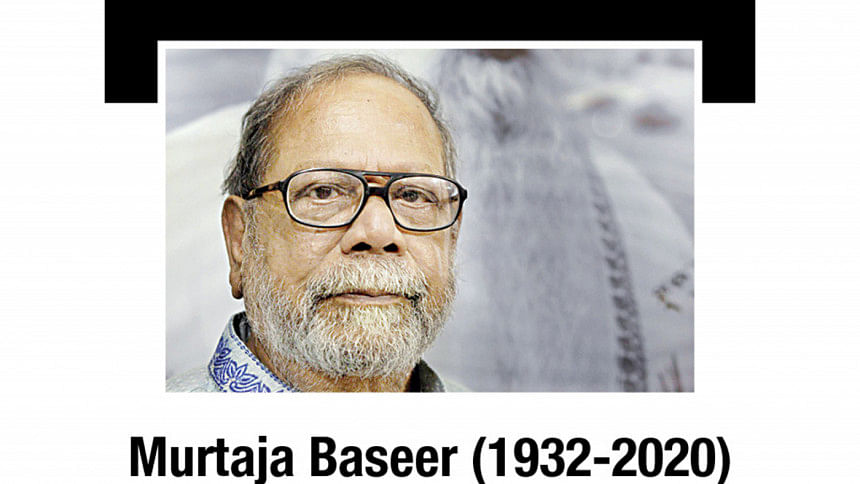The passing of a pioneer

August 17 would have been eminent artist, poet, litterateur, Language Movement veteran and versatile genius Murtaja Baseer's 89th birthday.
The art maestro passed away today at 9:10am, while undergoing treatment at the ICU unit of Evercare Hospital in Dhaka. His elder daughter, Munirah Baseer, confirmed the news to The Daily Star.
Followed by his namaz-e-janaza, he was buried at Banani graveyard yesterday. He left behind three children -- Munirah Baseer, Munijah Baseer and Mehraj Baseer.
The artist was admitted to the hospital due to severe respiratory problems and reduced oxygen consumption rate, along with other old age-related ailments. Doctors confirmed that he was Covid-19 positive.
Murtaja Baseer had been given oxygen artificially for several years due to respiratory problems since 2013, and had a heart failure due to increasing fluid in his lungs last year.
The President, Prime Minister, State Minister for Cultural Affairs, and various artists and art connoisseurs have expressed their shock at his demise.
"We lost a true legend, a pioneer and a versatile genius of Bangladesh. He had a strong personality, uncompromising to his creation of arts. Yet, he was a very soft hearted man," said eminent artist Monirul Islam.
Born in 1932, the youngest son to the eminent scholar Dr Muhammed Shahidullah and Marguba Khatun, Murtaja Baseer would regard himself as "an artist by chance."
Baseer's six-decade career, starting in 1954, occupies a unique place in the modern art history of Bangladesh, but what makes this prolific artist stand out is his continuous attempt to learn, grow and evolve.
His works include the series Wings of Butterfly, The Wall, and Epitaph for the Martyrs.
As a socially conscious artist, Baseer's paintings are much more than what they appear to be. He would often try to capture the struggles of the people around him.
Baseer believes that his lifelong dedication to important social causes and affinity for paintings stemmed from his adherence to the communist ideology, starting when he became an active member of the student wing (Chhatra Federation) of the Communist Party in 1947.
He is also acclaimed for his meticulous style and unique choice of themes in his novels. In 1954, he wrote a novel titled "Ultramarine", based on contemporary life in Kolkata and the social issues of the time.
Baseer's collection of selected works, Murtaja Baseer: Murto O Bimurto, will remain as a treasure trove for Bangladeshi art.
He joined Dacca Art College (now the Faculty of Fine Arts, University of Dhaka) as a student in 1949, also studying mosaic and etching at École nationale supérieure des Beaux-Arts in Paris in later years.
The art maestro received numerous accolades, including the country's highest civilian awards -- the Ekushey Padak and the Shadhinota Puroshkar.

 For all latest news, follow The Daily Star's Google News channel.
For all latest news, follow The Daily Star's Google News channel. 



Comments